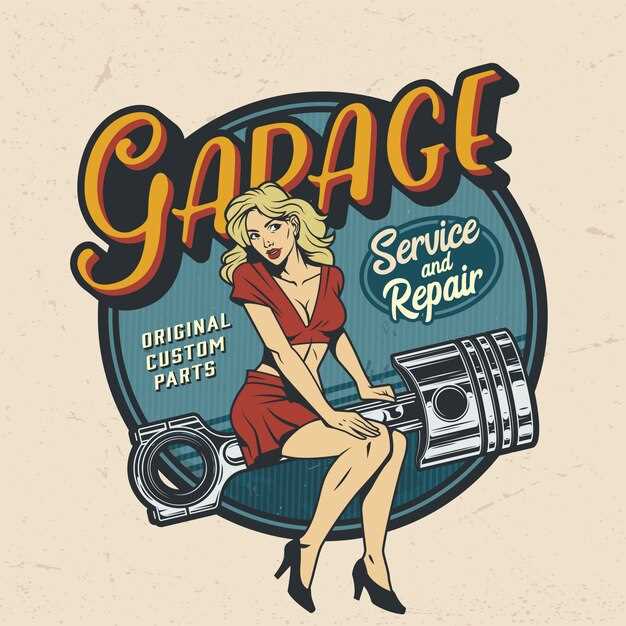
Launching a vintage car club is an exciting and rewarding endeavor that allows enthusiasts to come together and share their passion for classic automobiles. The journey of founding such a club not only fosters camaraderie among members but also promotes the appreciation and preservation of vintage vehicles. Whether you’re a seasoned collector or a newcomer to the vintage car scene, creating a club can be a fulfilling way to connect with like-minded individuals.
To successfully establish your vintage car club, it’s essential to start with a clear vision and purpose. Define the goals of your club, whether it’s organizing events, hosting car shows, or simply enjoying leisurely drives together. Engaging potential members early on will help solidify your founding principles and encourage active participation from the start.
Choosing the right name for your vintage car club is another vital step in the founding process. A memorable and evocative name will attract attention and reflect the spirit of your club. Consider incorporating elements that highlight your love for classic cars, ensuring that it resonates with both current and prospective members.
Setting Up Club Structure and Membership Guidelines

Establishing a solid structure and clear membership guidelines is essential for the success of your vintage car club. A well-organized framework helps attract enthusiasts and fosters a sense of community among members. Here are key elements to consider:
1. Club Structure

A defined hierarchy within the club ensures smooth operations and communication. Consider the following roles:
- President: Oversees club activities, represents the club at events, and leads meetings.
- Vice President: Supports the president and takes over in their absence.
- Treasurer: Manages finances, including membership dues and event budgets.
- Secretary: Keeps records of meetings, correspondence, and membership lists.
- Event Coordinator: Plans and organizes club events, such as car shows or road trips.
2. Membership Guidelines
Clearly outlined membership guidelines are crucial for attracting the right enthusiasts and maintaining club integrity. Consider the following:
- Eligibility: Define what qualifies as a vintage car (e.g., cars over 25 years old) and set any additional requirements for membership.
- Membership Types: Determine whether to offer different levels of membership (e.g., individual, family, honorary) and any associated benefits.
- Dues: Establish a reasonable annual fee to support club activities and ensure sustainability.
- Code of Conduct: Create a code of conduct that promotes respect, integrity, and camaraderie among members.
- Application Process: Outline how interested individuals can join the club, including any necessary forms or interviews.
By establishing a clear club structure and well-defined membership guidelines, your vintage car club can flourish and provide a welcoming space for all enthusiasts. This founding framework will also help in navigating challenges and ensuring the club’s longevity.
Organizing Events and Activities for Vintage Enthusiasts
Creating engaging events is essential for the success of your vintage car club. This fosters camaraderie among members and attracts new enthusiasts. Begin with regular meetings where members can share their experiences, discuss restoration tips, and exchange knowledge about vintage vehicles. These gatherings can be held monthly or quarterly, providing a consistent opportunity for interaction.
Organize themed car shows that showcase specific eras or types of vintage vehicles. These events can draw large crowds and create excitement within the community. Collaborate with local businesses for sponsorship, which can enhance the event and provide additional resources. This collaboration will also help raise awareness about your club.
Consider planning group drives or rallies that allow members to enjoy their vehicles in scenic locations. These drives can be a great way to explore local roads and attractions while strengthening the bond among enthusiasts. Ensure to include a picnic or social gathering at the end of the drive to foster discussions and share memories.
Educational activities, such as workshops on restoration or maintenance, are invaluable for members. Inviting expert speakers or organizing hands-on workshops can enhance members’ skills and knowledge. This adds significant value to your club and encourages active participation. Furthermore, partnering with local vintage car experts or mechanics could provide fresh insights and expand your network.
Don’t forget charity events that involve your vintage cars. Organizing a charity drive not only contributes to a good cause but also shows the community the positive impact of your club. Engaging in charitable activities will help attract new members who share similar values and interests.
After founding your club, continue to seek feedback from members regarding events and activities. This will help you tailor future events to meet their interests and expectations. A thriving vintage car club hinges on active participation and a commitment to offering exciting and meaningful experiences.
Promoting Your Vintage Car Club to Attract Members
To successfully attract members to your vintage car club, targeted promotion is essential. Begin by identifying and engaging with fellow car enthusiasts. Utilize social media platforms, such as Facebook and Instagram, to showcase your club’s activities and highlight members’ vintage vehicles. Create visually appealing posts that resonate with potential members who share a passion for classic automobiles.
Consider hosting local events or meetups that focus on the vintage car community. These gatherings not only foster camaraderie but also provide an opportunity for interested individuals to learn more about your club. Ensure that you provide activities that cater to both seasoned enthusiasts and newcomers, encouraging a welcoming environment for all.
Networking plays a crucial role in founding your club’s reputation. Partner with local garages, restoration shops, and car shows to increase visibility. Distributing flyers at these locations can effectively communicate your club’s mission and upcoming events. Additionally, exhibiting at vintage car shows allows you to attract a broader audience and generate interest.
Leverage online forums and websites dedicated to vintage cars to promote your club. Sharing content that resonates with car lovers can spark discussions and drive traffic to your club. Consider creating a dedicated website or blog where you can share stories, tips, and news related to vintage cars, reinforcing your club’s identity within the community.
Lastly, word-of-mouth remains a powerful tool. Encourage existing members to invite friends and family who may share their enthusiasm for vintage vehicles. A personal recommendation can go a long way in drawing new members into your club, making them feel like part of a passionate and friendly community from the start.

